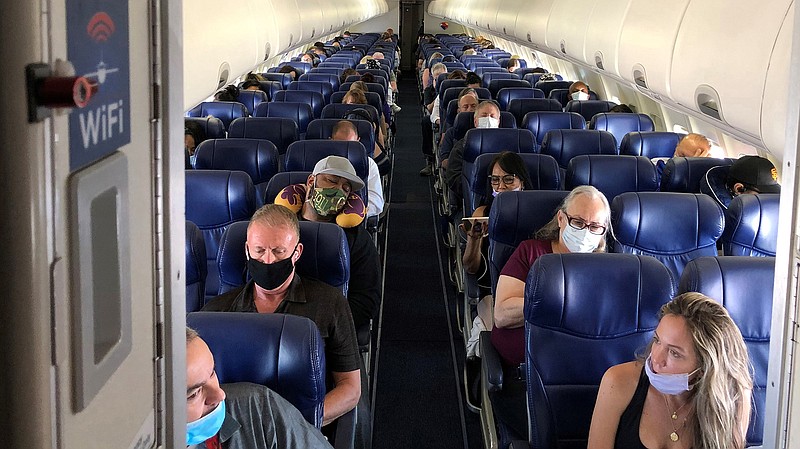It appears that we are flying again, with over 1.2 million passing through TSA checkpoints the Sunday after Christmas. Sure, it's far less than in previous years because many people don't think it's safe. I've argued elsewhere that flying, even with COVID-19 potentially on board, might be safer today than it was in the 1960s, a decade during which over 8,000 passengers and crew (and some on the ground) died in commercial aviation disasters. But I sometimes wonder how seriously airline passengers take safety anyway, considering that they never watch the pre-flight safety video.
Let me make a wild guess: you didn't watch the safety video last time you flew.
Maybe it was that pre-flight text you sent that seemed so urgent, the one that read, "Hey I'm on the plane. Looks like we're taking off soon," or maybe it was the latest antics of someone famous for being famous on YouTube or Instagram or TikTok that diverted your attention, or that video of a dog jumping into a pile of autumn leaves over and over. It was cute, I'll give you that.
Less cute are the other videos we see, preserved forever thanks to the smartphone, of hapless passengers flailing about in an emergency, doing precisely what the pre-flight video implored them not to do.
Here's a thought: What if pre-flight demos explained the whys behind the dos and don'ts? Would you watch? Would the message sink in?
For example: why remind you, as some but not all airlines do, to wear shoes during takeoff and landing? That's because blazing-hot tarmacs, especially in summer, can incinerate unshod feet, as happened when an Emirates plane crash-landed in Dubai a few years back. Miraculously, third-degree burns on scorched soles, which made running clear of the flaming wreck that much harder, were the only injuries. Many might have run faster had they not been lugging their carry-ons, ignoring instructions from a terrified flight attendant who repeatedly cried, "Leave all bags behind! Jump and slide!"
The reasons behind some of these instructions are less obvious than others. You're asked to raise the window shades for takeoff and landing so you can see at a glance if it's safer to evacuate from one side of the aircraft than the other; to fit your oxygen mask before helping others because when all the air gets sucked out the plane (and your lungs) during a decompression, you have only seconds before incoherence renders you unable to help yourself let alone anyone else; and to keep your seat belt fastened at all times because passengers have been known to bounce off walls and ceilings during severe turbulence, resulting in broken bones and even paralysis.
Everything you watch or fail to watch, more likely in the demo anticipates a previous tragic event, in hopes that it will prove a one-off. The International Civil Aviation Organization, a United Nations agency that codifies safety standards for the airline industry, added a warning against inflating life jackets inside the plane after a hijacked Ethiopian Airlines 767 landed on the Indian Ocean in 1996. Suddenly buoyant passengers who inflated before exiting were jammed against the cabin's ceiling as the interior flooded. Several drowned.
Thankfully, that's only happened once, but other accidents befall passengers all too often. We're cautioned that items in the overhead compartments "tend to shift in flight," and yet a jet-setter such as my friend Mike, who flies several times a month, was sued for $20,000 when his carry-on conked a fellow passenger. Ouch.
Jerry Seinfeld, the comedian, lampoons the seat-belt bit in the demos. "The flight attendants do their little emergency equipment show," he gibes, "in case you haven't been in a car since 1965. Ohhh, you lift up on the buckle! I was going to tear the fabric apart!" But that's just it: you've unbuckled your car's seat belt thousands of times, most recently when you arrived at the airport prior to departure, by pushing down. And that's what panicked passengers sometimes attempt during an emergency evacuation, wasting precious seconds searching for that elusive red plastic release button.
An Australian study published in the International Journal of Aviation Psychology found that 50% of passengers can't recall critical messages in the videos those "little emergency shows" that cost airlines millions to produce, and that your airfare helps pay for soon after watching them. And that's if a celebrity is featured; noncelebrity videos do even worse. Maybe Seinfeld should offer his services.

